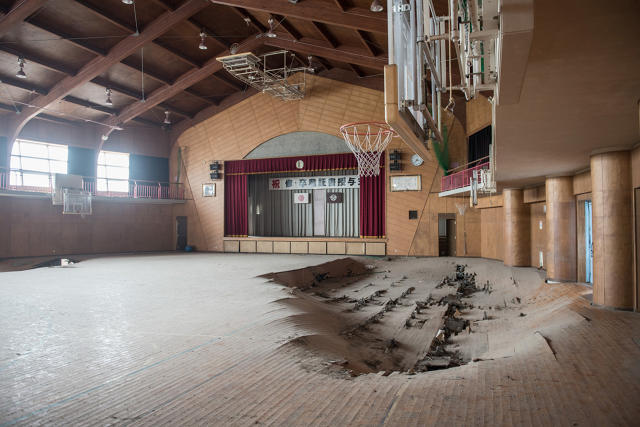Fukushima Four Years After The Nuclear Disaster Is A Post-Apocalyptic Wasteland
In these amazing photos, a photographer gets rare access to document the both extraordinary and mundane images of the Fukushima cleanup.Seven years ago, photographer and filmmaker Arkadiusz Podniesiński visited Chernobyl. This year, four years after the nuclear disaster in Japan, he took his camera to Fukushima to document the similarities between the two post-nuclear-disaster sites, and see how the cleanup was progressing.
Fukushima is divided into three zones: red, orange, and green. In the green zone, the cleanup has almost been finished. The topsoil has been removed and cleaned. Homes have been decontaminated, and soon residents will be allowed to return.

But Podniesiński was more interested in the orange and red zones. In the orange zone, where residents can visit but not stay overnight, he found farmer Naoto Matsumura, who returned illegally to live because "he could not bear to see whole herds of cattle wandering aimlessly in the empty streets when their owners had fled the radiation."
The red zone is deserted, but for the police who regularly checked Podniesiński’s difficult-to-secure permits. The place is eerie and peaceful. The earthquake and the tsunami that sent the nuclear plant into meltdown didn’t damage the entire town, so many deserted buildings stand intact. An abandoned motorbike stands tangled in weeds that have grown up through cracks in the concrete floor, and dumped cars are hidden in overgrowth.

Stopped clocks in a primary school still show the time they stood when the tsunami cut power to the region. Inside the school, computers remain on desks, while trophies are piled haphazardly inside glass-fronted cabinets after the earthquake shook them off their shelves. The gymnasium remains almost untouched, perfect except for deep hollows where the floors collapsed into the earth below. (Continued)
Continue reading Why Nuclear Power Is a Bad Idea: A Case in Point



